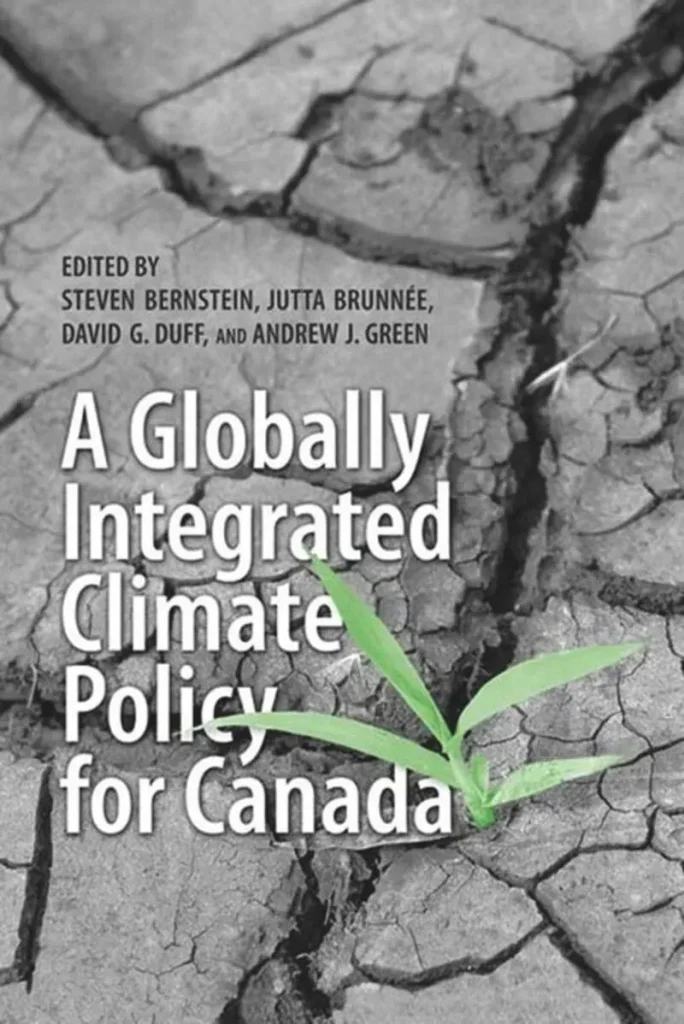Canada’s climate policies are a crucial aspect of the nation’s approach to addressing environmental challenges and promoting sustainability. As the Trudeau climate agenda continues to unfold, discussions surrounding the impact of these policies on the Alberta energy sector have come to the forefront. Recently, Energy and Natural Resources Minister Tim Hodgson emphasized the need for a thoughtful transition, especially regarding how these environmental policies in Canada will affect local economies reliant on natural resources. In light of the recent public statements from Alberta and Ontario’s environment ministers, the government’s approach appears to prioritize a gradual shift rather than sweeping changes. This dialogue reflects the tension between implementing ambitious climate goals and ensuring the economic stability of regions heavily dependent on industries, such as those surrounding Cochrane Inter Pipeline, which play a pivotal role in Canada’s energy landscape.
The discussion around Canada’s approaches to climate regulation and ecological sustainability has gained significant traction, particularly regarding the potential transformation of its energy systems. Conversations surrounding environmental strategies have sparked considerable debate about the balance needed between economic growth and environmental preservation. Key stakeholders, including provincial leaders, are voicing their opinions on how federal decisions will influence the energy landscape, especially in Alberta’s oil-rich zones. This dialogue indicates a growing awareness of the intricate connections between natural resource management and climate change initiatives across the nation. The intricacies of this topic underscore the importance of assessing energy policies in relation to Canada’s overall environmental objectives and commitments to climate action.
Impact of Climate Policies on Alberta’s Energy Sector
The climate policies implemented during the Trudeau administration have created a complex landscape for the Alberta energy sector. Minister Tim Hodgson’s remarks at the Inter Pipeline Extraction Plant highlight the nuanced challenges that Alberta faces in transitioning to more environmentally sustainable practices while addressing economic stability. With Alberta being a major player in Canada’s oil and gas production, any shifts in policy must carefully consider the implications for local job markets, investment potentials, and long-term sustainability practices.
As provincial leaders insist on a more cautious and gradual approach to climate reforms, the Alberta energy sector remains at a crossroads. The relationship between environmental policies in Canada and the economic vitality of resource-rich provinces such as Alberta requires a balanced strategy that promotes innovation while safeguarding the economic interests of communities that rely heavily on natural resource extraction. This dialogue emphasizes the need for collaborative efforts between federal and provincial governments to achieve feasible solutions.
Trudeau’s Climate Agenda: Challenges and Local Impacts
Prime Minister Trudeau’s climate agenda has brought significant changes in how Canada approaches environmental responsibilities. However, the implementation of these policies has been met with resistance from provincial leaders, particularly in resource-dependent areas like Alberta and Ontario. The challenge lies in finding a feasible balance that aligns the federal objectives for a greener economy with the realities faced by those in traditional energy sectors. The potential for economic disruption is a major concern, prompting calls for more dialogue and gradual implementation.
In response to these challenges, conversations around adapting climate policies to reflect local realities are becoming increasingly important. Various stakeholders, including energy producers and environmental advocates, are seeking effective solutions that ensure environmental protection while promoting economic growth. The impact of these discussions on the Alberta energy sector could dictate the future trajectory of not only Alberta’s economy but also the overall success of Canada’s climate initiatives.
Navigating Environmental Policies in Canada
Environmental policies in Canada are undergoing significant scrutiny as provincial governments voice their concerns over the economic implications of federal climate initiatives. The Hogan administration’s commitment to addressing climate change aims to include a full assessment of how these policies can be tailored to suit the needs of provinces, especially in Alberta where the energy sector plays a crucial role in the economy. This approach seeks to harmonize environmental goals with local interests, acknowledging that a one-size-fits-all model may not be effective.
Moreover, local stakeholders are advocating for policies that support the sustainable development of natural resources while mitigating negative environmental impacts. There is a growing recognition that Canada’s climate policies must incorporate feedback from the provincial level to ensure that they not only protect the environment but also promote economic resilience. Therefore, finding innovative ways to engage with local communities and industries will be critical in shaping a balanced framework for environmental policy in Canada.
Cochrane’s Role in Canada’s Climate Strategy
Cochrane, Alberta, has emerged as a focal point in discussions surrounding Canada’s climate strategy, particularly regarding the Inter Pipeline Extraction Plant. Tim Hodgson’s appearance at this facility underscores the importance of integrating local energy production with broader environmental objectives. Cochrane’s initiatives in sustainable resource management could serve as a model for other Canadian towns grappling with the dual pressures of climate policy and economic stability.
Local energy facilities like the Inter Pipeline in Cochrane illustrate the need for collaboration between industry leaders and government officials to ensure that climate policies are both effective and economically viable. As the government looks toward more stringent environmental regulations, the lessons learned from Cochrane’s experiences could inform future policies that embrace technological innovation and sustainability within the energy sector.
The Future of Natural Resources in Canada
The conversation surrounding natural resources in Canada is becoming increasingly intertwined with climate policy. As federal initiatives push for a reduction in carbon emissions, resource-producing provinces, notably Alberta, must adapt while still capitalizing on their rich natural assets. The future of the natural resources sector depends on the ability to innovate and embrace cleaner technologies without sacrificing the economic benefits these resources provide.
Strategic investment in new technologies that enhance the efficiency and sustainability of resource extraction processes will be crucial for ensuring the long-term viability of Canada’s natural resources. Furthermore, as global demands shift toward more sustainable practices, Canada’s prosperity may hinge on its ability to lead in both environmental responsibility and resource management.
Economic Considerations in Climate Policy Implementation
The intersection of economic considerations and climate policy implementation is particularly pronounced in Alberta, where the economy heavily relies on the energy sector. Minister Hodgson’s insights highlight the need for policies that do not unduly disrupt local economies or lead to significant job losses. Policymakers must find ways to drive progress toward climate goals while supporting economic growth and ensuring a just transition for workers in traditional industries.
Adapting economic frameworks to embrace green technologies and sustainable practices will be essential as Alberta navigates the complexities of climate reform. This transitional phase must be handled sensitively, with a clear strategy that allows for investment and innovation within the energy sector, ensuring that economic stability is maintained throughout the process.
Engaging Stakeholders in Environmental Policy
Engaging a diverse range of stakeholders is crucial in shaping effective environmental policies in Canada. The dialogue between government officials, industry leaders, and environmental advocates must focus on collaborative solutions that address both climate and economic goals. Effective stakeholder engagement can help bridge the gap between environmental ambitions and the realities faced by the energy sector in Alberta and beyond.
As discussions around the Trudeau climate agenda evolve, recognizing the specific needs and concerns of local communities will be key to policy success. Active participation from all stakeholders can foster innovative ideas that contribute to a sustainable future, ensuring meaningful progress towards environmental objectives without sacrificing economic growth.
The Role of Provincial Leaders in Climate Policy
Provincial leaders play a vital role in shaping and influencing climate policies at the federal level. Their unique insights into local economic conditions and resource management are essential for creating effective and equitable climate strategies. In Alberta, leaders are pushing for a more balanced approach that recognizes the importance of energy production while also committing to environmental responsibilities.
The collaboration between provincial and federal governments is necessary to ensure that climate policies reflect the realities on the ground. By understanding the specific challenges and opportunities within provincial contexts, leaders can advocate for more adaptive policies that meet both environmental and economic needs without compromising the future.
Contributions of the Cochrane Inter Pipeline to Sustainability
The Cochrane Inter Pipeline is at the forefront of sustainable practices within the energy sector, exemplifying how traditional industries can adapt to modern environmental standards. As discussions about climate policies progress, the facility stands as proof that it is possible to operate efficiently while also adhering to stricter environmental regulations. This approach not only benefits the local economy but also aligns with broader Canadian climate goals.
By implementing state-of-the-art technology and sustainable methods, the Cochrane Inter Pipeline demonstrates the potential for resource industries to reduce their carbon footprint. Continuous investment in sustainability initiatives can serve as a platform for encouraging other facilities across Canada to embrace similar practices, driving forward the national agenda for a greener future.
Frequently Asked Questions
What are the key elements of Canada’s climate policies?
Canada’s climate policies include commitments to reduce greenhouse gas emissions, promote renewable energy, and enhance energy efficiency. Under the Trudeau climate agenda, there is a focus on transitioning Canada’s energy sector, including the Alberta energy sector, towards sustainable practices while balancing the economic impact on local communities.
How does Alberta’s energy sector influence Canada’s environmental policies?
The Alberta energy sector is a significant contributor to Canada’s overall economy and greenhouse gas emissions. As Canada seeks to implement its climate policies, provincial leaders, particularly from Alberta, are voicing concerns over how federal policies may affect job creation and economic stability. This influential position on energy production necessitates careful consideration in shaping effective and balanced environmental policies.
What role does Natural Resources Canada play in climate policy implementation?
Natural Resources Canada is crucial in developing and implementing the country’s environmental policies. By coordinating with provincial governments, including Alberta and Ontario, Natural Resources Canada ensures that Canada’s climate policies address both national and regional interests while promoting sustainable practices across the energy sector.
Why is the Trudeau climate agenda significant for Canada?
The Trudeau climate agenda represents Canada’s commitment to international climate agreements along with ambitious goals to reduce emissions. This agenda influences economic strategies and environmental policies that affect numerous sectors, including the Alberta energy sector, guiding Canada towards a greener future while considering socio-economic factors.
How might the discussions in Cochrane regarding the Inter Pipeline affect future climate policies?
Discussions at the Inter Pipeline Extraction Plant in Cochrane reflect ongoing negotiations between provincial and federal policymakers about the direction of Canada’s climate policies. The feedback from local leaders like Alberta’s Energy Minister may lead to adjustments in strategies to balance climate goals with the energy sector’s economic needs. This gradual approach aims to address concerns without creating abrupt changes that could destabilize the energy landscape.
| Key Points |
|---|
| Hodgson’s response references Alberta and Ontario’s environment ministers’ letter. |
| Minister Tim Hodgson spoke on climate policies at the Inter Pipeline Extraction Plant in Cochrane, Alberta. |
| He suggested that changes to climate policies from the Trudeau administration would be gradual. |
| Discussions are ongoing regarding the federal government’s environmental policies and energy sector impacts. |
| Provincial leaders are concerned about the effects of current climate agenda on local economies. |
Summary
Canada climate policies are under scrutiny as discussions continue regarding their evolution. Tim Hodgson’s recent remarks emphasize a careful and gradual approach towards reforming the climate policies implemented during the Trudeau administration. This careful consideration arises from the need to balance federal environmental objectives with the economic stability concerns expressed by provincial leaders. As the dialogue progresses, the implications for both energy sectors and regional economies will become increasingly significant.



